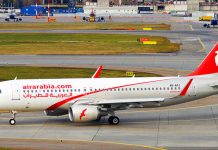As Kerala offers many popular tourist destinations, Kannur is considered one of the best tourist spot in north Kerala. Kannur, on the other hand, is the 4th largest city after Kozhikode, Thiruvananthapuram, and Kochi. As per the latest survey, the total population of Kannur district is 2.5 million.
Kannur International Airport (IATA: CNN, ICAO: VOKN) is an international airport serving the district of Kannur, the northern district in the state of Kerala, India. Spread about 2,000 acres (810 ha), it is located about 25 km (16 mi) east of the city near the municipality of Mattannur. It is owned and operated by Kannur International Airport Limited, a public–private consortium. The airport has a runway of 3,050 metres. The Airport is scheduled to open on 9 December 2018.
Kannur International Airport Ltd (KIAL) MD, V. Thulasidas confirmed 9 December 2018 as the launch date after it received the approval from the Director General of Civil Aviation (DGCA). The Kannur airport is expected to serve more than one million passengers annually and authorities estimate the number will increase five-fold by 2025. The first aircraft to land was an IAF (Indian Air Force) aircraft that landed at the airport on 29 February 2016. The first trial passenger flight operation conducted on 20 September 2018 using a Boeing 737-800 aircraft from Air India Express.
Kannur International Airport – Promotional Video
History : Kannur had an airstrip used for commercial aviation as early as 1935 when TATA airlines operated weekly flights between Bombay and Trivandrum — stopping at Goa and Cannanore.[5] The operator started the service to Kerala on 29 October 1935. The long-standing demand for an airport was only conceptualized in 1997, when C. M. Ibrahim the then union minister of civil aviation, backed the proposal for an airport in the district. The vast extent of land at Moorkhanparamba near Mattannur was identified for the project a few months later following a hectic search for land for developing the proposed airport. The formal commencement of construction activities at the project site on 17 December at a function attended by Civil Aviation Minister Praful Patel and Chief Minister E. K. Nayanar.
Though the State government accorded sanction for the Kannur international airport project in January 1998 and appointed Kerala Industrial Infrastructure Development Corporation (KINFRA) as the nodal agency for its implementation, it had to wait for a decade till it was finally approved by the Central government in January 2008. During the period, a private agency appointed by Kerala Industrial Infrastructure Development Corporation (KINFRA) to study techno-economic feasibility report submitted its report. The earlier site proposed at Madayipara was dropped owing to ecological concerns. Two vast plateaus near Mattannur were identified for the airport, namely Moorkhanparamb and Velliyamparamb, with about 1300 acres and 800 acres of land to be acquired from each respectively.
After a prolonged wait, the airport received in-principle approval from the Ministry of Civil Aviation and Union cabinet in January 2008.Land acquisition began in December 2008 after issuing notifications and fixing compensation. The public company Kannur International Airport Limited (KIAL), under the PPP model, was registered in October 2009. The foundation stone for the airport was laid on 17 December 2010 by then-Chief Minister V. S. Achuthanandan. In 26 November 2013, KIAL and Larsen & Toubro Ltd are scheduled to sign a contract on construction work at the airport. In January 2014, The Kerala State Government Minister for Excise and Ports announced the Kerala State Government and AAI plan to sign an MoU on the equity structure of Kannur International Airport Limited.
Terminals : The airport will have an integrated passenger terminal for both international and domestic travellers with a floor area of 97,000 m2 (1,040,000 sq ft) for arrival and departure separately. It will be able to handle up to 2,000 passengers during peak hours with its unique swing facility. It features six aerobridges with 48 check-in counters, 32 emigration counters, 16 customs counters, four conveyor belts and access control inside the terminal. The passenger terminal will use the swing facility. The international gates will be used for domestic operations when there is no international flights. The passenger terminal building has a double skin aluminium roofing system and efficient LED lighting adopting the green building concept.
A cargo terminal complex having a8 floor space of 32,000 m2 (340,000 sq ft) will also be constructed.
Kannur Airport has one runway, 07/25 which is 3,050 by 45 metres (10,007 by 148 feet). The 07/25 runway orientation permits an obstacle-free approach. The runway 25 end will have Category I approach lighting and the 07 end will have simple approach lighting. The runway will be extended to 4,000 metres (13,000 ft) after the airport is commissioned. Land acquisition of about 260 acres is underway for this purpose. The runway will have a full length parallel taxiway and its apron will allow 20 wide-bodied aircraft to park at the same time.
The airport’s air navigation services and air traffic control will be handled by the Airports Authority of India (AAI). The ATC tower will be equipped with Doppler variable omni range and distance measuring equipment, air traffic system automation, instrument landing system, voice recorder, GPS clock system etc… It will have VHF communication facilities and equipment for obtaining radar signals from the Cochin International Airport. The tower is 30 metres (98 ft) high and has a floor area of 1,923 square metres (20,700 sq ft).
The airport has a 28,000 square metres (33,000 sq yd) fuel farm constructed and operated as a joint venture company floated by KIAL and Bharat Petroleum Corporation Ltd. (BPCL) — the BPCL-KIAL Fuel Farm Private Ltd. The Rs.17-crore fuel farm has underground tanks for aviation fuel storage and will provide fuel for aircraft operating from the airport.
Kannur airport will have an aircraft maintenance, repair and overhaul unit- MRO facility. A large maintenance terminal is dedicated for this. The facility is expected to cater to both narrow and wide-bodied aircraft. The MRO will undertake maintenance work on aircraft and their components, such as jet engines, landing gear, air frames and components etc… and will involve line maintenance and hangars.
An aviation academy will be set up in the airport by the Rajiv Gandhi Aviation Academy and Technology on two acres of land allotted for it. The institute will offer students courses in aeronautics and provide flight training.



















